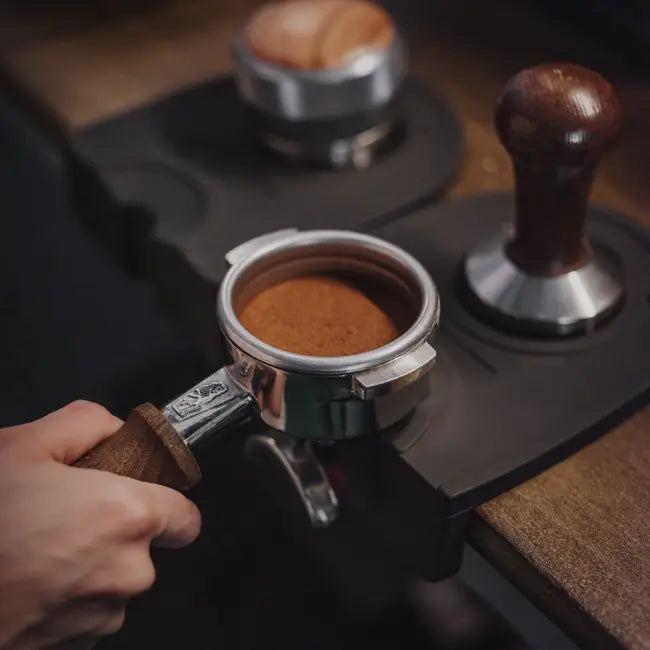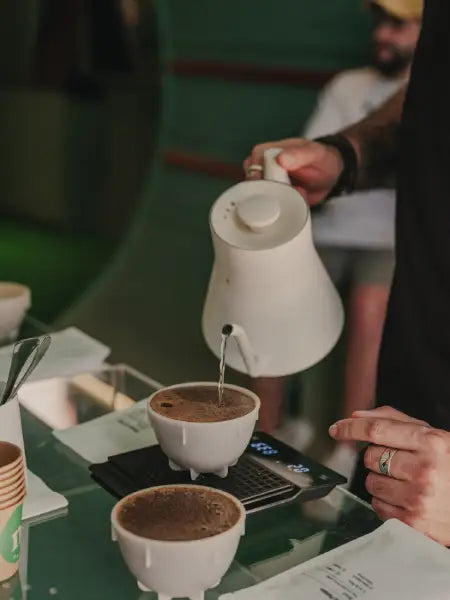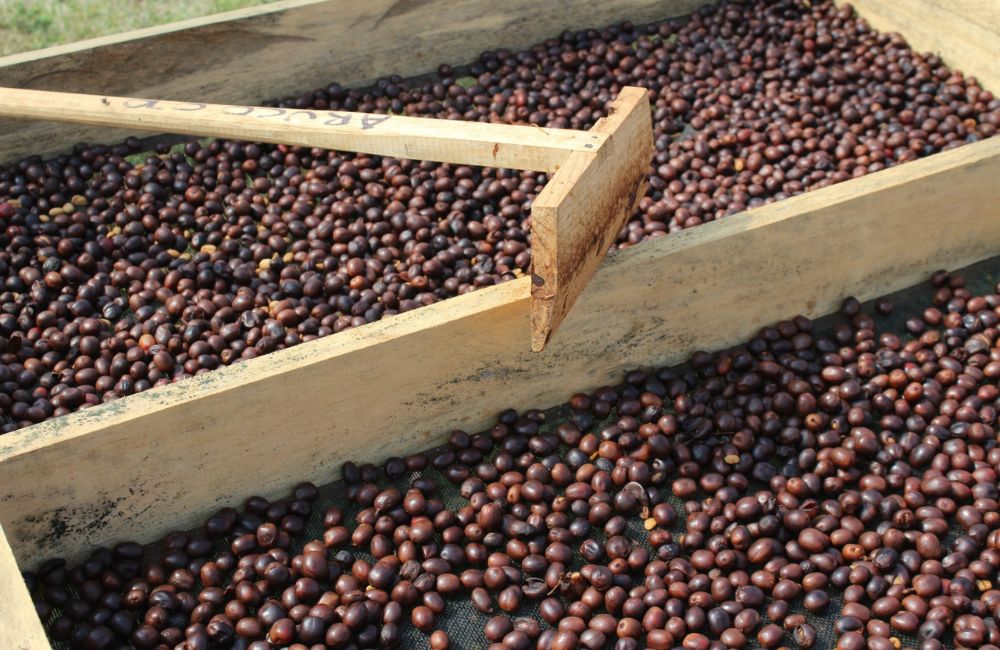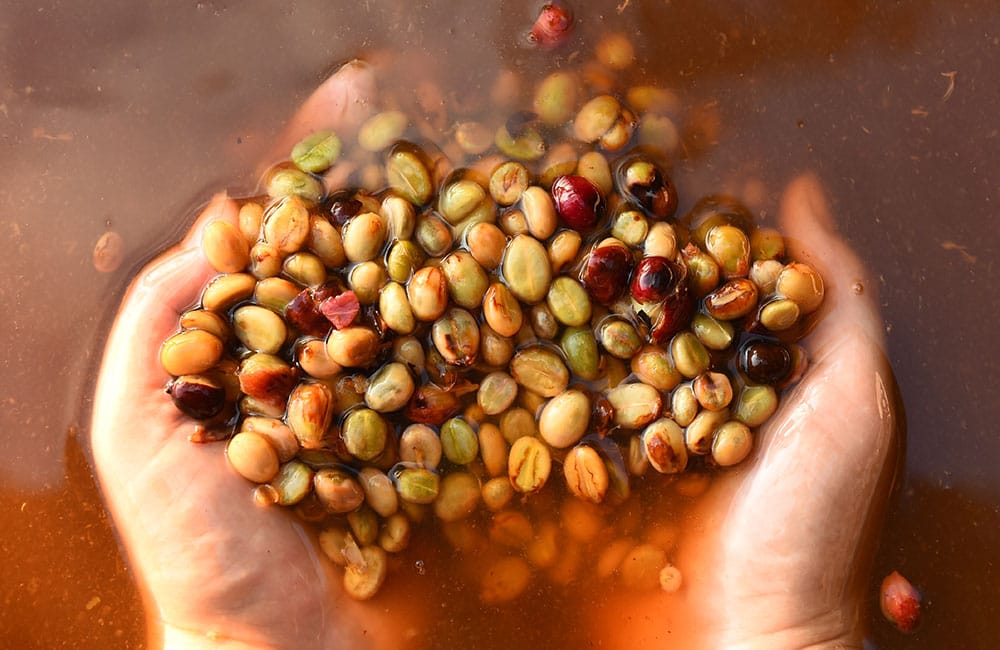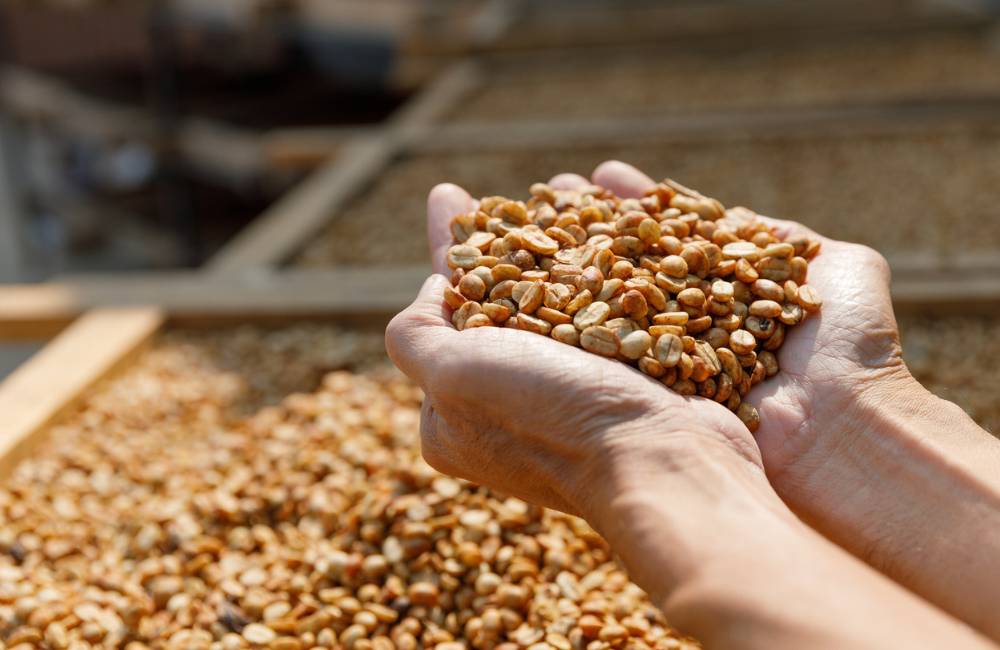El café con proceso natural
El café natural hace referencia al tipo de procesado que se utiliza tras recoger las cerezas de café de la planta y preparar los granos de café para su exportación y tostado.
En los cafés naturales las semillas del café (cada cereza tiene dos) se dejan secar dentro de la cereza y se despulpan una vez está seca.
Esta breve definición técnica quizás no te diga mucho, pero vamos a desgranarla para comprender qué es un café natural, en qué se diferencia de otros procesos, como el lavado o el honey, y cómo afecta al perfil de taza.
El café natural en el mundo del café de especialidad
Es importante anotar una diferencia entre lo que se conoce en el mundo del café de especialidad como un café natural y lo que se entiende por este mismo término en el café comercial.
En los cafés comerciales, que podemos encontrar en cualquier supermercado y en muchas cafeterías, el café natural se refiere a que no es torrefacto. El café torrefacto es café que se ha tostado con azúcar/glucosa, aunque también podríamos decir café que se ha carbonizado con azúcar.
El café torrefacto es malo. Es malo para tu salud, es malo para el medioambiente y es malo para tu paladar. De hecho, es una práctica que va en contra de los principios del café de especialidad (puedes profundizar sobre esto en este artículo). Por eso nosotros, y todo el mundo que habla de café de especialidad, cuando dice café natural se refiere a un café que ha sido secado utilizando un proceso que se ha llamado “natural”.
Imagen de las cerezas de café mientras se procesan con el proceso natural
¿Los cafés se procesan?
Sí, los cafés se procesan, pero esto no quiere decir que pasen por una manipulación química o que se les añada algo perjudicial. A lo que nos referimos con el procesado del café es a la forma en la que las semillas de café se separan de la cereza y se secan.
Hay varias formas de hacer esto, lo que da lugar a los diferentes procesos. Del proceso de café lavado hablamos en este post, pero brevemente se refiere a que la cereza se despulpa, luego se lava y así conseguimos las semillas listas para el secado.
Otro tipo de procesado es el ‘honey’, del que nos ocupamos en este post, pero brevemente significa que la cereza se despulpa, pero se deja algo del fruto (el mucílago) alrededor de la semilla. Posteriormente se seca como en el proceso natural.
Por último, tenemos el café natural o de proceso natural, que significa que las semillas de café se secan con cáscara y mucílago y que estos se eliminan una vez secas.
Hay muchos otros procesos y variaciones de estos mismo, pero estos tres; lavado, honey y natural, son lo más comunes y base para los otros.
El procesado del café natural
 Las cerezas para el café de especialidad se recogen solo en su punto óptimo de maduración y, generalmente, a mano Para poder entender cuál es el proceso del café natural, debemos brevemente mencionar la anatomía de una cereza de café (puedes profundizar más aquí). Una cereza de café es el fruto de los cafetos. Esta cereza esconde en su interior dos semillas, como muchas otras frutas. Son las semillas del interior de la cereza lo que utilizamos para hacer café.
Las cerezas para el café de especialidad se recogen solo en su punto óptimo de maduración y, generalmente, a mano Para poder entender cuál es el proceso del café natural, debemos brevemente mencionar la anatomía de una cereza de café (puedes profundizar más aquí). Una cereza de café es el fruto de los cafetos. Esta cereza esconde en su interior dos semillas, como muchas otras frutas. Son las semillas del interior de la cereza lo que utilizamos para hacer café.
Entre las semillas, que están escondidas en el interior, y la cascara, que está en el exterior, hay varias capas que, en orden concéntrico de fuera hacia dentro serían: cáscara, mucílago, pergamino y semilla.
Como hemos dicho, el tipo de procesado de un café se refiere al orden y la forma en la que se separan las diferentes partes de la cereza de café para dejar las semillas libres y secas, que es lo que comúnmente conocemos como café verde (antes de ser tostado).
En un café de proceso natural las semillas se secan dentro de la cereza, es decir, sin quitarle nada (cáscara o mucílago). Estas capas se quitan una vez la semilla está seca.
Al dejar la semilla secar sin quitar todos estos componentes de la cereza, hace que azúcares y cualidades organolépticas se transfieran a la semilla durante el proceso de secado, lo que crea un perfil determinado en taza.
Fases del proceso de café natural
 La selección se las cerezas maduras es una parte importante del proceso Un café procesado por el método natural pasa por las siguientes fases:
La selección se las cerezas maduras es una parte importante del proceso Un café procesado por el método natural pasa por las siguientes fases:
1. Selección de cerezas, la cosecha. Las cerezas se recogen de los cafetos en su punto óptimo de maduración. En muchas ocasiones se ponen en agua, las que tienen poca densidad (no están maduras o son defectos, palos, hojas) flotan y las buenas bajan. Esto es un proceso de selección para solo procesar las cerezas en su punto óptimo.
2. Secado. Las cerezas de café se ponen a secar en camas elevadas o sobre un pavimento seco. Este proceso puede llegar a tardar dos semanas o más, y es notablemente más largo que en cafés procesados por otros métodos. Esto se debe a que al estar la cereza completa y no solo la semilla (como en el café lavado) o las semilla y el mucílago (como en el café honey) tarda más tiempo en desaparecer toda la humedad.
Esto también significa que durante el secado se dará un proceso de fermentación y de transferencia de azúcares de la cereza a la semilla, lo cual creará un perfil de taza diferente al de otros métodos. Es imprescindible mover y voltear las cerezas durante todo el proceso para que el secado sea uniforme.
Perfil en taza de una café natural
 Durante el secado es crucial que las cerezas se volteen regularmente para un secado uniforme Hemos dicho al principio que el procesado de café se refiere a la forma y el orden en el cual las semillas de café se separan de la cereza y se secan. Hemos dicho también que un café natural es aquel en el que las semillas se dejan secar con la cereza y se separan una vez secas. Esto, a su vez, conforma un perfil de taza.
Durante el secado es crucial que las cerezas se volteen regularmente para un secado uniforme Hemos dicho al principio que el procesado de café se refiere a la forma y el orden en el cual las semillas de café se separan de la cereza y se secan. Hemos dicho también que un café natural es aquel en el que las semillas se dejan secar con la cereza y se separan una vez secas. Esto, a su vez, conforma un perfil de taza.
Los cafés naturales tienden a tener un perfil de cata intenso y afrutado, con una dulzura compleja. Las semillas reflejaran tanto la variedad como el ‘terroir’, pero la percepción de estos se verá afectada por el proceso de fermentación mientras se seca y ocurre la transferencia de azúcares de la cereza a las semillas.
En esto se diferencia de los otros procesos, especialmente del lavado, cuyas notas suelen ser claras y limpias.
Esto no quiere decir que un método de procesado sea mejor que otro, sino que afectan de forma diferente a la semilla y, en última instancia, a la bebida resultante, el café. El procesado elegido es una decisión del caficultor, que sabiendo cómo este afecta a la semilla elegirá uno u otro en función de lo que quiera conseguir, del tiempo y de los recursos con los que cuente.
Por ejemplo, el proceso natural para el café es el que menos recursos naturales, como agua, necesita y el más sostenible, pero también es el que más recursos de espacio y tiempo requiere.
En cualquier caso, lo importante es que tú sepas a lo que se refiere cada proceso y cómo esto afecta al café. De esta forma estarás preparado para apreciar uno y otro y decidir cuál te gusta más.

